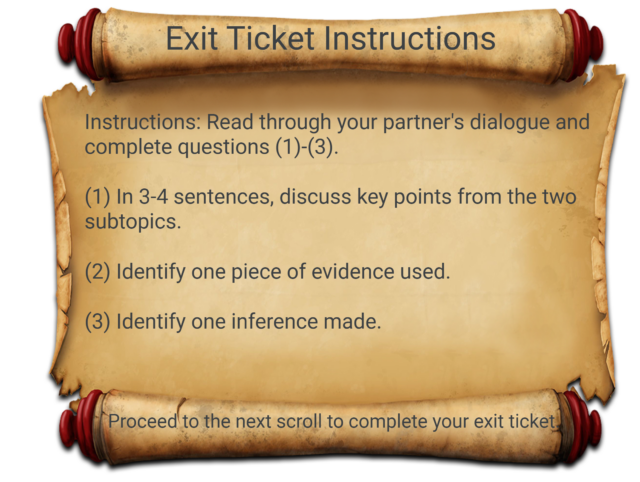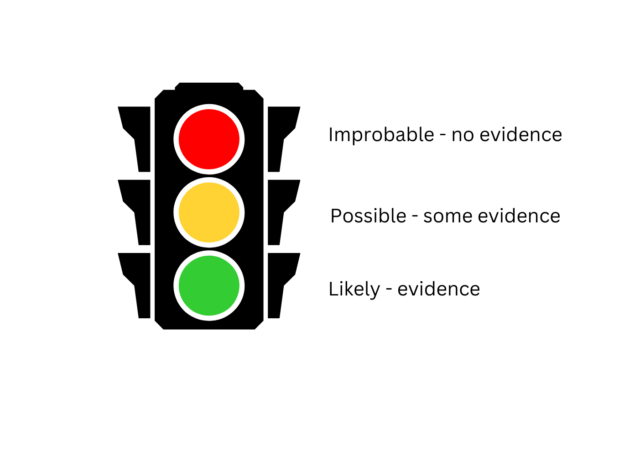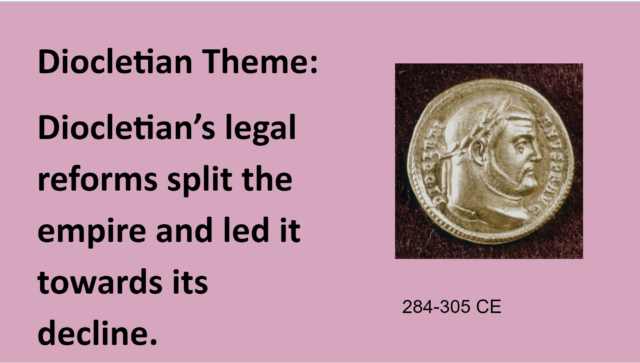I have so many paint brushes!! I always think the newest brush will solve my painting problems; however, I have learned (the expensive way) that brushes aren’t magical. Although, there are a few specialized brushes that I absolutely love and feel DO make a difference when I match the tool to the job.

In teaching world history, I am certainly NOT the person who wants to use the newest gadgets and technologies. So, in this post, by tools I mean something more like medium or type of activity: Essay or podcast? Group, pair, or solo work? That kind of thing. The most technology I’ve ever used was of course during the pandemic – switching to Google Classroom, for instance, or using jamboards, or Google docs interactively. I’m not a Luddite but I am pretty low-tech.
A word on use of Google Classroom: it’s a great organizational tool, one I can overdo. I tend to load up my GC with resources that I think are helpful. But when I see the way students interact with the GC, I realize that most of my resources are being missed because on GC I focus on the classwork tab; students tend to use the stream. Also, if I were teaching this year, I’d try to rely on GC less. I will do anything to keep students off computers and off their phones. They need to learn to be independent of their mind-altering devices.
Lastly, a word on inquiry. In a post on medium / type of activity, I must make it clear that most of the course is in an inquiry-like style, with as little lecturing as possible. It’s 2023-24 after all!
Athens vs. Sparta Assignment, Oct. 2025 (most of my links will disappear when I retire in June, FYI)
CHW3M Assignments that Used the Right Tool
Athens Vs. Sparta
Though my course is generally structured around cooperative group learning, there were times during the pandemic when that felt kind of scary. During the first full year of pandemic learning I had two student teachers at the same time (one being virtual, one in person). They came up with a great pair assignment for the Athens vs. Sparta topic. Credit goes to Reilley Kallem and Ellie Leung for pushing forward with this; I was hesitant but it turned out to be a great project.
After learning some basics about both Athens and Sparta (way of life, social structure, some cultural aspects, etc.), the students were to read Pericles’ “Funeral Oration” and Aristotle’s “On a Good Wife” and incorporate one of them into in-role writing between an Athenian and a Spartan of opposite class origins. The creative in-role aspect was that they were assigned very specific social positions – gender and socio-economic status (along with some helpful background information on their positions). They had to come up with a scenario in which their characters would ‘meet’ and discuss one of the primary source documents mentioned above. Also being tech masters, these young teachers made the jamboards look like very cute (and historically relevant) scrolls.

The final pair aspect was that the students had to write an exit ticket in which they critically examined their partner’s in-role writing. I liked that they had to demonstrate what they had learned from their partner, or had the opportunity to note the shortcomings of their partner’s work without complaining about them.

The next year I adapted this assignment back to my original intent (in-role writing but not with quite such specific roles) but kept the spirit of the exit ticket. I allowed students who wanted to work by themselves to do so, but the majority chose to pair up and seemed to enjoy the task. It helped that I wrote an in-role sample for them (using a non-Greek topic).
Athens vs. Sparta Assignment, Oct. 2025 (most of my links will disappear when I retire in June, FYI)
Indus Valley
My class is generally based on cooperative group learning. When learning briefly about Indus Valley civilization at the start of the course, students worked in groups to examine multiple theories of its decline – a MYSTERY!!! This began as an activity I designed for the CHW3M provincial e-learning course. However, I adapted it heavily to the ACTUAL classroom. Each group was presented with four possible theories of decline and had to consider them and, most importantly, the evidence to support them. In past, I made this an individual assignment that followed upon the group’s assessment of the theories – not very creative. One year, however, I made it an individual follow-up where they could choose to morph the theories if they felt that provided the best evidence-based solution to the mystery. I got some very interesting combinations of theories and noticed that students felt more ownership. Most important for me was that the students began to use what I call the language of probability; they used a version of red light, yellow light, and green light. History is all about interpretation but it needs to be based on evidence.

Athens vs. Sparta Assignment, Oct. 2025 (most of my links will disappear when I retire in June, FYI)
This is also an example of using inquiry style without research. Though research is often a component of inquiry, it doesn’t have to be something that takes a lot of time. That’s why I made summaries of the four theories of decline for the students. They still had to do the work to differentiate between general information and specific evidence to support each theory. In a packed, very broad course such as CHW3M, the teacher has to pick the moments for time- consuming research.
Email Risa if you’d like the Indus Valley assignment. risa@cabal.org
Athens vs. Sparta Assignment, Oct. 2025 (most of my links will disappear when I retire in June, FYI)
Rome – Not Always the Right Tool
Since I have taught grade 11 World History for nearly 25 years, it goes without saying that I have a lot of versions of assignments. Probably the unit with the most versions is Rome, which, not surprisingly also happens to be the unit with which I am most familiar. As a teacher of world history, I can never know all the content equally. I learn bit by bit, but I am endlessly fascinated by Rome and have read a lot! This would naturally give me a huge Rome unit!
At the same time, however, I have also changed the course over the years to incorporate more societies. So, I had to give up some Rome activities that I really loved, such as one I inherited and turned into a real crowd pleaser: trial of the assassins of Julius Caesar (email Risa if you’d like a copy).
The curriculum has changed a few times since I’ve taught this course, mostly for the best, I believe. I like pairing decline of a ‘civilization’ with the HTC causes and consequences, so I turned one of my old Roman emperor research projects into a competition for best or worst emperor (scroll down to end of page) depending on how much each had contributed to the eventual decline of Rome.

It has been through many iterations but has never quite clicked. Here are a few of the formats I’ve tried:
- Group presentations in front of the whole class – boring
- Rotating presentations in groups – confusing
- Groups read each other’s slide presentations – not interactive enough
Athens vs. Sparta Assignment, Oct. 2025 (most of my links will disappear when I retire in June, FYI)
Competition is actually a very good tool. It works well in my culminating activity but it just hasn’t gelled for this assignment, though I do remember one version some years ago when each group had to come up with a tweet (the “in” social media at the time) about each of their competitors for best or worst emperor. It was FUN! One year I was away at a conference the day the students were writing tweets. I was watching live on Google Slides as the groups entered their tweets. I was laughing out loud during someone’s presentation! Obviously I would not leave them alone to do that these days of fraught social media.
@OptimusPrinceps (Trajan): Hey Hadrian, thanks for keeping the land safe from the barbarians – but you could’ve done more. #expansions #successor
@Trajan stop wasting money on frivolities. Rome doesn’t need to be pretty!
Athens vs. Sparta Assignment, Oct. 2025 (most of my links will disappear when I retire in June, FYI)
There are a million possibilities for how you could teach something. It’s up to the teacher to try to find the best tool for the job. Your choice won’t always be perfect – it’s okay to take a risk, but it should be thought through.